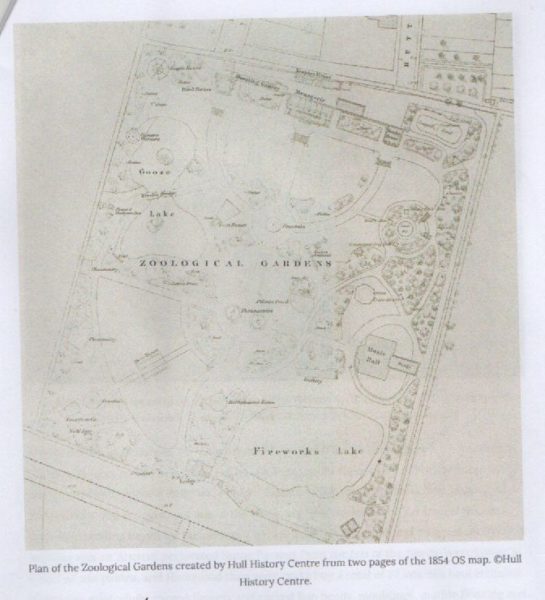
The site that was the Zoological Gardens, 1840s to 1860s, can easily be located today in the southern parts of Hutt and Peel Street on the north side of Spring Bank. Further up Hutt Street the street plan has changed. The book ‘Streets of Hull, A History of their Names’ (John Markham, Highgate Press, 1987) states that both Peel and Hutt Streets were extended south to Spring Bank when the Zoological Gardens were closed and assets sold in 1862. Apparently, after the closure the land was owned by the Hull and East Riding Freehold Land Society so it must have been they who sold-off the Garden’s assets. The housing development that replaced the Zoological Gardens was speculative built, that is funded by the land holding company in the hope of eventually generating a profit from rentals paid by tenants over the years. From the outside the houses are quite large, maybe three or four bedrooms and with the occasional tradesman’s property identified by two full-height doors alongside the house through which a horse and cart could come and go.
Peel Street was named after Sir Robert Peel (1788-1850), the Conservative Prime Minister who, as Home Secretary in 1820s, founded the Metropolitan Police and who in 1846 split the old Tory Party when Repealing the Corn Laws. After Peel’s death the ‘Peelites’ join the Liberal political party; Hull always was home to many Liberal supporters.
Hutt Street was named after William Hutt, Liberal M’P. for Hull 1832-1841, an indirect ancestor by marriage to Charles III. A mock ‘half-timbered’ building on Hutt Street is said to be a remnant of the Zoological Gardens but its location does not correspond with any building on the map of the Gardens. Was this building, either originally the Gatehouse or the keeper’s house, moved from the Gardens to its present location in Hutt Street?
To be continued